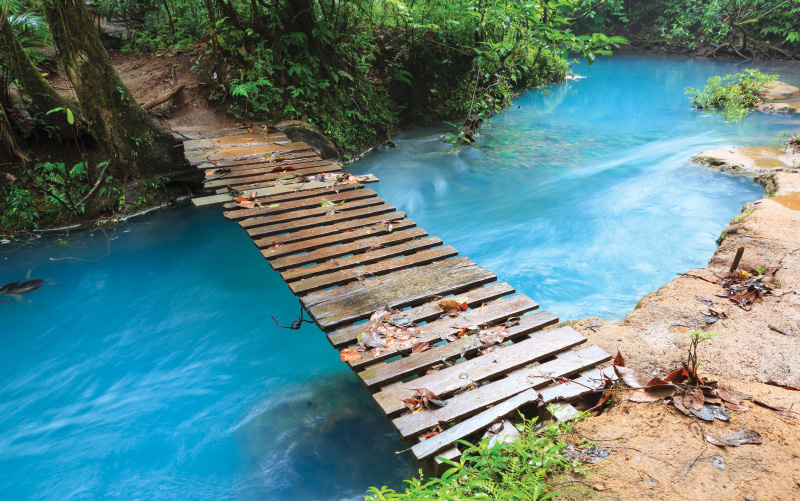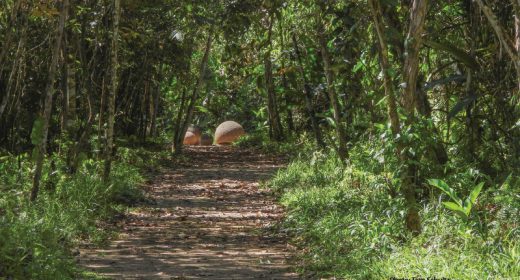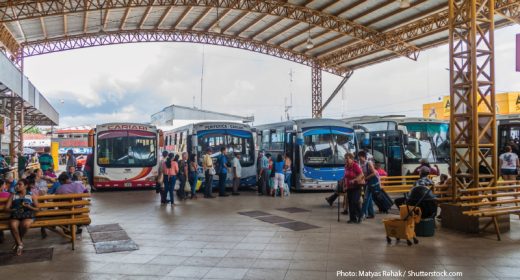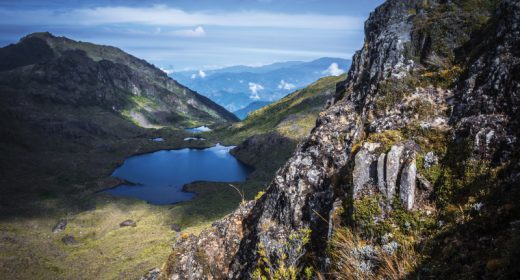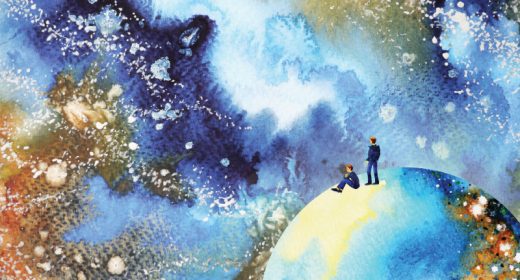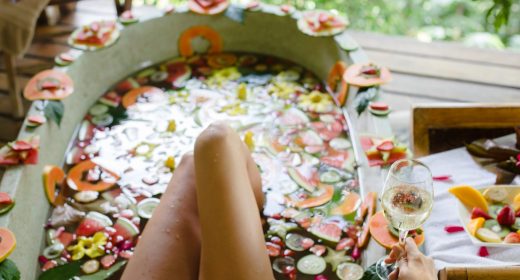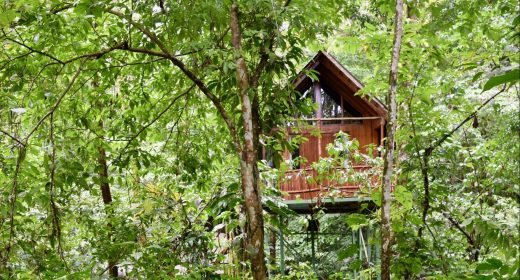
Tenorio Volcano National Park
- APR 01, 2019Warning: count(): Parameter must be an array or an object that implements Countable in /home/howlermag/public_html/old/wp-content/themes/new-paper/includes/general.php on line 193
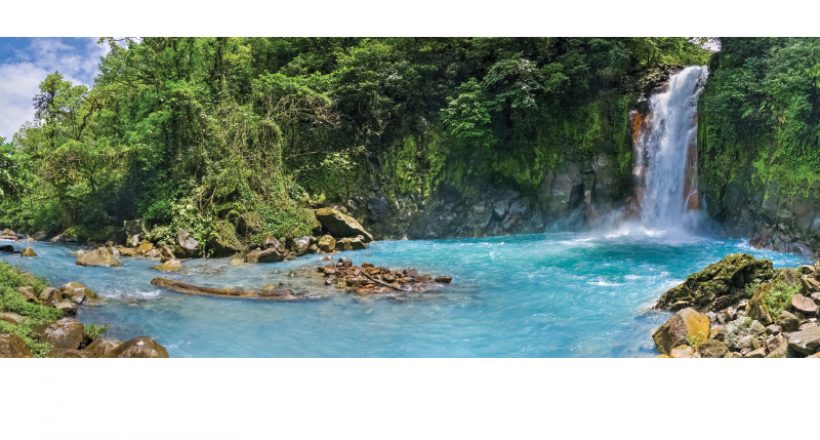
Your Lead Paragrpah goes here
Tenorio Volcano National Park. One of Costa Rica’s most amazing attractions is the Rio Celeste, located in the northern region. “Celeste” means heavenly or sky blue, so the name translates literally to “Blue River.” To see Rio Celeste at its most beautiful, from the place where it starts, take a trip to Tenorio Volcano National Park.
This river’s naturally amazing blue color is enhanced by a uniquely dazzling effect of solar reflection on volcanic particles in the water (see Paint it blue sidebar on page 28). In fact, it’s one of several key seasonal factors to keep in mind when planning your park visit. The spectacular blue appearance of Rio Celeste is diminished by the absence of sun and presence of rain. When conditions are rainy and muddy, the water color is a lot less blue due to much lower concentrations of volcanic material.
You might think the
river is dyed blue, when in fact
there is nothing artificial about the colorization.
This is one obvious reason why Tenorio is so popular during dry season, when the weather is relatively stable and predictable. It can actually become so busy then, or on weekends, that visitors are turned away. The maximum limit for crowd control is 1,200 people a day, and no more than 400 at one time. Likewise, there’s a chance of the park being closed in inclement weather when the trails are notoriously muddy and slippery. For those who do visit during rainy season, suitable footwear is a must (boots are available to rent if needed) and trekking poles can come in handy.
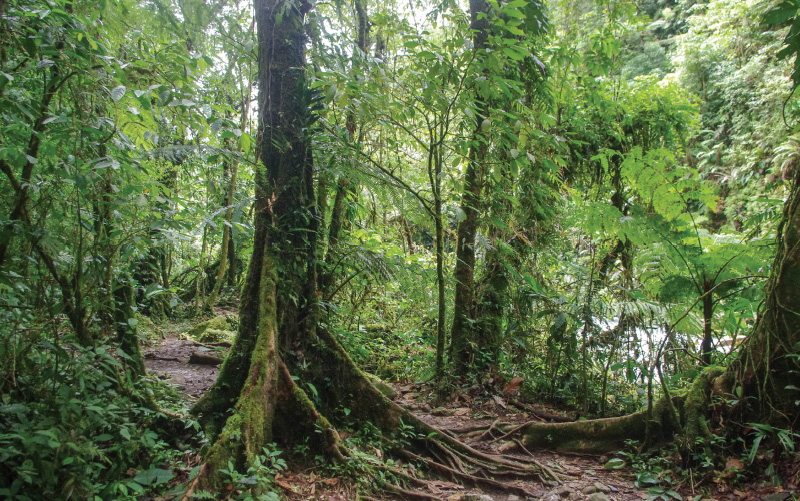
What to see in the park
With Rio Celeste and waterfall being the main park attraction, this is your first destination. The walking trail is flat until you reach the stairs — 150 meters down! — to the falls viewing area. (An alternate falls viewing area, accessed from a separate trail and park entrance from Guatuso, was closed in 2014 due to maintenance difficulties.) This walk is suitable for most children but might be difficult for toddlers or people with issues walking long distances or steep inclines.
After being treated to this spectacular falls sight, you climb back up the stairs and proceed along the trail. More park wonders await on your walk beyond this point — a little over 1 kilometer each way.
The first stop is the Mirador, with a gorgeous view of Tenorio Volcano, especially on a clear day. Continue following the trail to Blue Lagoon (Laguna Azul), a natural lagoon from the Rio Celeste that lives up to its name. It’s the perfect place to stop and rest or enjoy a snack. The next stop is the Borbollones (gurgling, bubbling and spurting are descriptive English adjectives). This site where boiling water bubbles up and into the river was once a natural spa attraction for visitors wanting to bathe. Some unfortunate “parboiling” incidents resulted in the prohibition of all bathing in the river within park boundaries. The Borbollones emits a strong sulphur smell that is more than noticeable; you will want to enjoy it quickly before heading off to the final and most interesting part of the hike.
Just a bit further on, while crossing a small bridge, you come upon Los Tenideros and you’ll see the unmistakably blue river. This is where the stream comes in contact with a special section of earth and suddenly the water turns blue, caused by the silica particles being expelled and suspended in the water.
If the Rio Celeste water falls and stream waters are not fascinating enough during your walk through the park, look up and around in all directions. The forest is beautiful! If you are lucky, many birds can be spotted and possibly some mammals too.

How to get to Tenorio Volcano National Park
Tenorio Volcano National Park is located near Bijagua in Upala.
From La Fortuna
The most common route is through Guatuso and Upala. This drive takes around 1.5 – 2 hours.
From Liberia
Turn south onto the InterAmericana highway and drive about 50 kilometers before turning left onto Route 6 until Bijagua. This drive takes about 1.5 to 2 hours.
More info
Entrance fees are the same as for other national parks: $15 for foreigners and 1,500 colones for residents and citizens. Parking requires payment for a dashboard sticker. Slather on the sunscreen and bug spray is only needed at dusk.
Hours: The park is open from 8 a.m. to 4 p.m., but no entries are allowed after 2 p.m.
There are restaurants outside the park, but nothing inside, so bring water and anything you want to snack on with you.
Paint it Blue
By all appearances, you might think the Rio Celeste is dyed blue, as implied by the name of the exact spot where the transformation happens: Los Tenideros means “the dyers.” In fact, there is nothing artificial about the water colorization ingredients or process. It’s an optical effect called “mie scattering.”
Without elaborating on the physics explanation, it is basically the reflection of color when a particle is close to the same size as a wavelength of light. A familiar example is the bright red color of clouds at sunset in some circumstances related to water particle size.
In the case of Rio Celeste’s blue tint, this remarkable phenomenon applies to the silica molecules that are leached into the water as a result of surrounding volcanic activity.
Other HOWLER Fun Adventures in Costa Rica
Rincon de la Vieja – Things to do
4×4 Lake Arenal – road to El Castillo
Lucky Lovers Leap into an adventure of a lifetime
Lake Arenal – Lost Canyon Adventure
Gone Fishing: worst day fishing beats the best day working
Seven Days in Costa Rica: Arenal, Dominical and More
Lake Arenal: Safari River Float is a slow boat to paradise
Gone Sailing in Guanacaste Costa Rica
Cocos Island, Costa Rica’s treasure
Stand Up Paddle boarding SUP
ATV Tours, Take the road not taken
Deep Sea Fishing, Fun and Flamingo Costa Rica
White water rafting in Costa Rica
Scuba Diving in Costa Rica
Costa Rica Combo Adventure Parks
Authentic Costa Rica: What to do in rural Bijagua
Blue River Resort and Hot Springs
